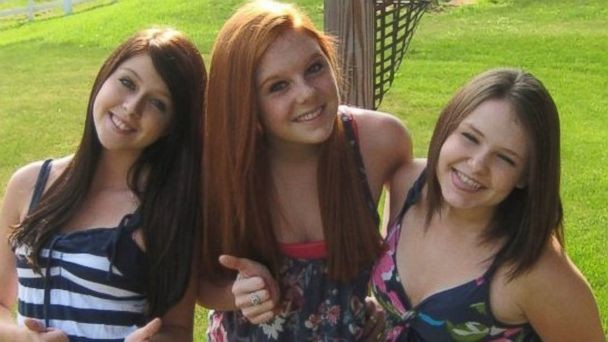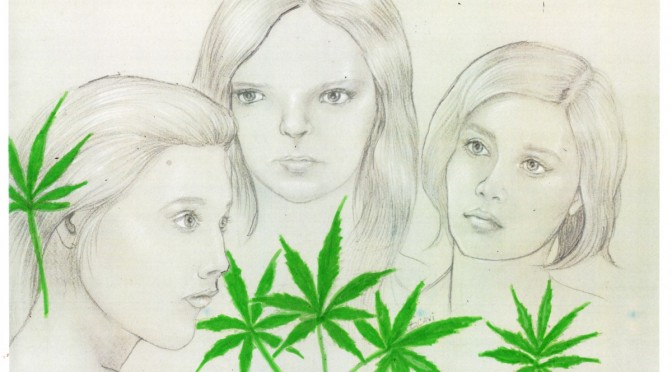Why did Shelia Eddy and Rachel Shoaf kill Skylar Neese on July 6, 2012? Authors Daleen Berry and Geoffrey C. Fuller explored the shocking incident in Pretty Little Killers, a New York Times bestseller. The book come to no definite conclusions why two 16-year-old girls from West Virginia would brutally murder another friend, but marijuana is a constant theme from beginning to end. Marijuana, pot and/or weed, is mentioned 36 times in the book.
The authors had been given access to Skylar’s journals and writings, looking for clues as to how and why such an event could happen. They explored the girls’ backgrounds. They interviewed friends, family and law enforcement and followed leads from online social media discussions.
At the end of the book, there is a summary of 15 warning signs to parents that their kids are in trouble. Pot and alcohol use are mentioned. Although these girls occasionally got drunk, the weed was by far the bigger focus in their relationship. The girls liked to sneak out at night in Shelia’s car to smoke pot, breaking curfew. And — of course — they smoked pot on the night of the murder.
Twisted friendships

A rupture in the friendship had developed 11 months earlier when Skylar saw Sheila and Rachel having sex at a sleepover. The book gives vague hints that Rachel and Shelia had wanted to get rid of Skylar for about 9 months before the murder happened, for fear she’d reveal the lesbian tryst. Although Skylar had at least two violent fights with Shelia Eddy before her friends killed her, she stayed away from the them during most of the previous 6 months. But on that fatal night, the lure of sneaking out of her apartment to smoke weed broke her resolve.
The well-researched book explains that the three girls began smoking weed about 21 months before the murder, during fall of their freshman year. About 15 months earlier, the girls had been caught violating curfew, going out with older guys who had pot.
They suffered few obvious consequences, as teen use of weed is viewed as harmless. Many parents don’t realize how much more potent the drug is now, compared to the ’70s, ’80s and ’90s. The girls continued to get good grades; for Shelia, it entailed some cheating. Shelia and Rachel became sexually active at the time. Skylar, not as physically mature as the other girls, held back.
The Pot Influence
The book suggests that Shelia first began using pot to impress the boyfriend for whom she had fallen, and that Skylar first used pot to impress Shelia. The book provides evidence that Skylar, considered a compassionate and amiable person, became a more difficult personality after she started smoking pot. Rachel developed a relationship with an on-again, off-again boyfriend, who objected to Rachel’s use of pot. At the same time, one of Skylar’s long-time best friends, Morgan, kept her distance because of Skylar’s pot use and the company she was keeping.
When friends object to another friend’s pot use, they may notice how it changes the personality, cognition, motivation and other brain functions more quickly than pot users do. In her journals, Skylar had noted that her friend Shelia had become a doormat for her boyfriend, nothing like she used to be. The following year, sophomore year, she described her friend as very depressed, no longer the fun person she had been (p. 60).
At one point in the book, depressed Shelia talks about how much she regretted that her life had gone so badly beginning in Fall, 2010. It was the time period after she started at the new high school and began using pot. She wished she could go back to her previous life. She continued to joke about the weed, saying things to suggest she knew it was damaging her brain. When referring to her habit, she said, “Time for dementia hits.” (p. 59) Shelia was clearly depressed and marijuana was making it worse.

The book explores many possibilities but doesn’t pinpoint a clear motive. What is clear, though, is that their friendship was toxic and the girls were bad for each other. They were tied together by the weed, and all of this toxicity was made so much more poisonous by the poisonous weed, marijuana.
Bad Feelings, Numb Feelings
Nearly every notorious murder trial or murderer in the news this year was a marijuana user: Eddie Routh who suffered from PTSD and marijuana-induced psychosis when he killed; Robert Durst who has left a trail of murder mysteries throughout the country; former NFL player Aaron Hernandez turned on his pot-smoking buddy and murdered him; the Aurora theatre shooter, James Holmes, and — of course — the Boston bomber, Johar Tsarnaev. In one study from a New York prison, 70% of prisoners had used marijuana within 24 hours of committing the crime.
In some situations, weed can flatten emotions to such an extent that it kills the conscience and empathy for others. In other cases, it makes people outright delusional and psychotic. People who compare pot to alcohol say booze makes users angry and violent while pot makes users mellow. They fail to mention that marijuana can cause depression and poor impulse control.
One study by Yale and University of Pennsylvania professors tracked the feelings of marijuana users’ before and after effects in 43 young adult subjects. Published in March, 2015, it showed marijuana use is associated with changes in impulse control and hostility in daily life – lasting even the day after pot use. The study did not observe similar hostility and poor impulse control after alcohol use. It concludes that further study would be a way to understand how “deleterious effects of marijuana are observed for mental health and psychosocial functioning. ”
(Disclaimer: We have not conducted interviews for this series but are going by information from the book and online videos from TV magazine programs. Follow Part 2, the friendship triangle; Part 3, how the trial unfolded, followed by a conclusion which links to recent scientific studies.

